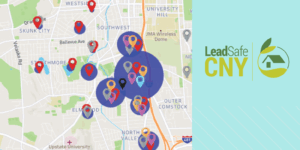Measuring the impact of your organization’s work can seem like a ’no brainer’ until you actually get into the weeds and the complex science behind it—then it can seem like a ‘headache.’ There are so many technologies and techniques involved in data measurement that some people spend their entire careers developing new ways to analyze and visualize the impact of community efforts.
This can be especially problematic for nonprofits that invest heavily in staff members to learn these skills only to have some find jobs elsewhere, leaving the organization no better off than when they started. To make matters worse, such transitions can undermine data-driven collaborations between organizations.
This year, our Performance Management Learning Community is introducing new, innovative tools designed to address both the steep learning curve and the need to sustain collaborative efforts despite staff turnover. While we will continue to focus on the fundamental skills of spreadsheets and databases, we are prioritizing easy-to-use tools that can be deployed and sustained by any and all staff in participating organizations—not just the ones partaking in the learning community.
We anticipate two key results:
- Better‑managed organizations that focus on impact
- Improved coordination across organizations
In terms of better management, we expect a comparison of data within organizations that allows front-line staff, program managers, grantwriters and executive leaders to see results in real-time and on mobile devices. The hope is that this will invite staff at every level to see the immediate impacts of their work and reinforce alignment between daily efforts and organizational mission.
When it comes to coordination across organizations, we anticipate that the new approach will help organizations keep an eye on broad community needs, but more importantly, be able to follow up on addressing those needs by reaching out to organizations that can complement and supplement their work. Historically, organizations tend to focus on measuring the needs of the clients that they can address; new tools make it much easier to keep tabs on client needs that fall outside of their mission or scope of work. The result is that participating organizations will be better equipped to reach out to other organizations in strategic ways to collaborate.
We are excited that with the addition of these new tools, performance management is more achievable by our local nonprofit organizations than ever.









